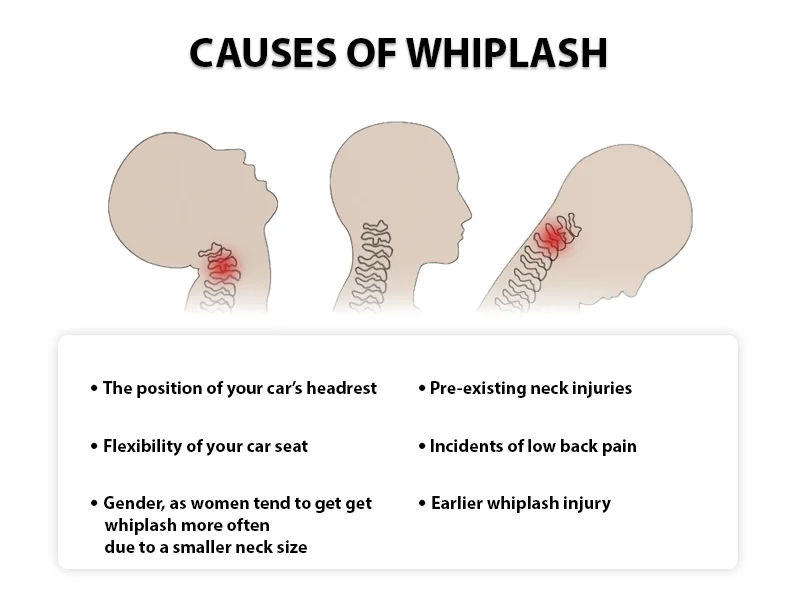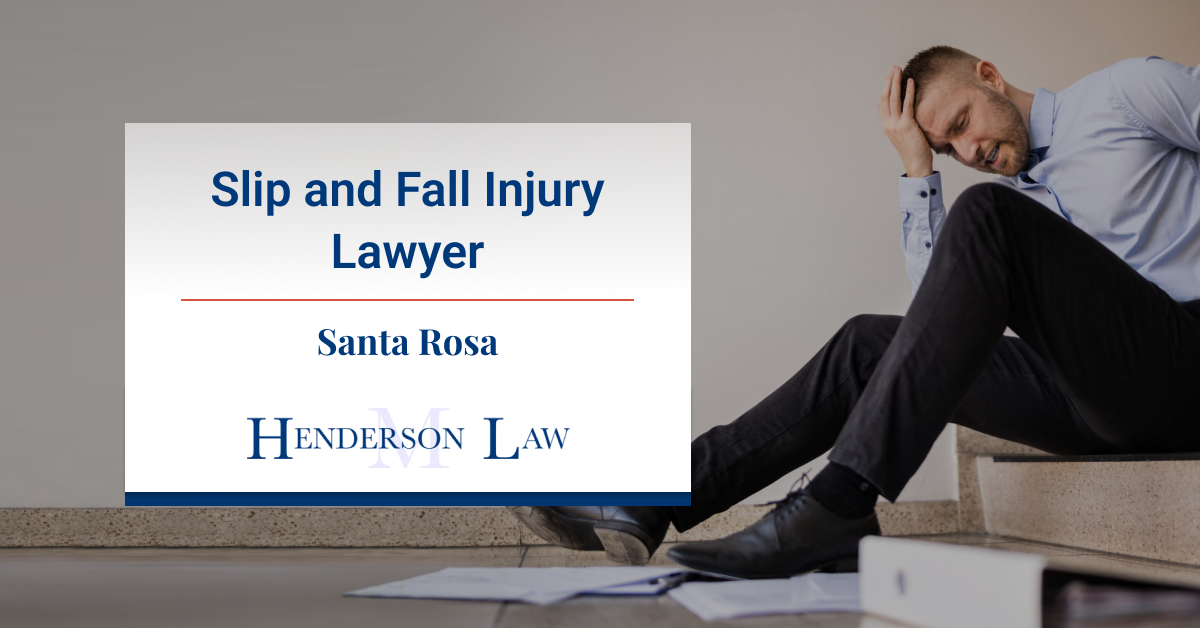Get the Lowdown on Injuries from Car Accidents
You’ve probably heard all about the dangers of driving—and for good reason. Car accidents are a leading cause of injuries and death in the United States. But what exactly are the injuries you can sustain in a car accident?
Types of Car Accident Injuries
The types of injuries you can sustain in a car accident will vary depending on the severity of the crash, the type of vehicle you were in, and how you were positioned at the time of impact. However, some of the most common car accident injuries include:
- Head injuries: Head injuries can range from minor cuts and bruises to serious traumatic brain injuries. Even a minor head injury can have long-term consequences, so it’s important to seek medical attention if you’ve been in a car accident and hit your head.
- Neck injuries: Neck injuries can also range from minor sprains and strains to serious spinal cord injuries. A neck injury can cause pain, stiffness, and numbness in the neck, shoulders, and arms.
- Back injuries: Back injuries can also range from minor sprains and strains to serious spinal cord injuries. A back injury can cause pain, stiffness, and numbness in the back, legs, and feet.
- Chest injuries: Chest injuries can range from minor bruises and cuts to serious internal injuries. A chest injury can cause pain, difficulty breathing, and coughing.
- Abdominal injuries: Abdominal injuries can range from minor bruises and cuts to serious internal injuries. An abdominal injury can cause pain, nausea, vomiting, and diarrhea.
- Leg injuries: Leg injuries can range from minor cuts and bruises to serious fractures and dislocations. A leg injury can cause pain, swelling, and difficulty walking.
- Foot injuries: Foot injuries can range from minor cuts and bruises to serious fractures and dislocations. A foot injury can cause pain, swelling, and difficulty walking.
Head injuries are the most common type of car accident injury, accounting for nearly half of all injuries. The severity of a head injury can range from a mild concussion to a severe traumatic brain injury (TBI). Symptoms of a head injury can include headache, dizziness, nausea, vomiting, confusion, and loss of consciousness. In severe cases, a head injury can lead to permanent disability or even death.
Neck injuries are another common type of car accident injury, accounting for about 20% of all injuries. The severity of a neck injury can range from a mild strain to a severe spinal cord injury. Symptoms of a neck injury can include pain, stiffness, numbness, and weakness in the neck, shoulders, and arms. In severe cases, a neck injury can lead to permanent disability or even death.
Back injuries are another common type of car accident injury, accounting for about 15% of all injuries. The severity of a back injury can range from a mild strain to a severe spinal cord injury. Symptoms of a back injury can include pain, stiffness, numbness, and weakness in the back, legs, and feet. In severe cases, a back injury can lead to permanent disability or even death.
If you’ve been in a car accident, it’s important to seek medical attention as soon as possible. Even if you don’t think you’re injured, it’s important to get checked out by a doctor to rule out any serious injuries.
Injuries from a Car Accident: A Health Guide for Victims
Car accidents are a leading cause of injuries in the United States, with millions of people suffering from various physical and psychological trauma each year. The severity of these injuries can range from minor cuts and bruises to life-threatening conditions, and understanding the potential injuries is crucial for victims seeking medical attention and legal recourse.
Common Injuries in Car Accidents
When a car crash occurs, the sudden impact and violent forces can cause a wide range of injuries to occupants and pedestrians alike. Some of the most common injuries include:
-
Whiplash: A neck injury caused by the sudden back-and-forth motion of the head, resulting in pain, stiffness, and headaches.
-
Neck Injuries: These include strains, sprains, and fractures of the neck bones, often leading to pain, limited range of motion, and neurological damage.
-
Back Injuries: Car accidents can cause back injuries such as strains, herniated discs, and fractures, resulting in pain, limited mobility, and potential nerve damage.
-
Broken Bones: Fractures can occur in any bone of the body, but the most common are in the arms, legs, ribs, and pelvis. Broken bones require medical treatment and can result in pain, mobility limitations, and prolonged recovery times.
Injuries from a Car Accident
Car accidents are a leading cause of injuries in the United States. Every year, millions of people are injured in car crashes. These injuries can range from minor cuts and bruises to serious injuries that can lead to permanent disability or even death.
Symptoms of Car Accident Injuries
The symptoms of car accident injuries can vary depending on the severity of the injury. Some common symptoms include:
- Pain
- Swelling
- Stiffness
- Bruising
- Difficulty moving
- Headache
- Nausea
- Vomiting
- Dizziness
- Blurred vision
- Fatigue
- Numbness or tingling
- Loss of consciousness
If you have been injured in a car accident, it is important to seek medical attention immediately. Even if you do not feel any pain, you may have injuries that are not immediately apparent. A doctor can evaluate your injuries and recommend the best course of treatment.
Types of Car Accident Injuries
There are many different types of injuries that can be caused by a car accident. Some of the most common types of injuries include:
- Head injuries
- Neck injuries
- Back injuries
- Chest injuries
- Abdominal injuries
- Leg injuries
- Arm injuries
- Burn injuries
The severity of a car accident injury can vary depending on a number of factors, including the type of accident, the speed of the vehicles involved, and the point of impact. Some car accident injuries can be treated with minor medical care, while others may require surgery or long-term rehabilitation.
Preventing Car Accident Injuries
There are a number of things that you can do to prevent car accident injuries. These include:
- Wear your seat belt
- Drive sober
- Obey the speed limit
- Be aware of your surroundings
- Avoid distractions
By following these tips, you can help to reduce your risk of being injured in a car accident.
Car Accident Injuries: Understanding the Impact and Seeking Treatment
When you’re involved in a car accident, the sudden impact can cause a wide range of injuries, from minor bumps and bruises to severe trauma. Recognizing the potential injuries is crucial for seeking prompt medical attention and ensuring proper treatment.
Diagnosis of Car Accident Injuries
Diagnosing car accident injuries requires a thorough examination by a doctor. They’ll begin by asking about your symptoms and performing a physical exam. Based on their findings, they may order imaging tests like X-rays or MRI scans to confirm or rule out specific injuries.
Common Car Accident Injuries
The type and severity of car accident injuries vary depending on factors like the impact force, seatbelt use, and the position of the body. Some common injuries include:
- Head injuries: Concussions, skull fractures, traumatic brain injuries
- Neck injuries: Whiplash, cervical sprains, disc herniations
- Back injuries: Spinal fractures, herniated discs, soft tissue damage
- Chest injuries: Bruised ribs, collapsed lungs, heart damage
- Abdominal injuries: Internal bleeding, organ damage, seatbelt injuries
Physical Signs of Car Accident Injuries
Recognizing the physical signs of car accident injuries is essential for seeking medical help promptly. These signs may include:
- Pain or discomfort in any part of the body
- Swelling, bruising, or discoloration
- Headache, dizziness, or nausea
- Limb numbness, tingling, or weakness
- Trouble breathing or chest pain
Importance of Medical Attention After a Car Accident
Even if you feel relatively unharmed after a car accident, it’s crucial to seek medical attention promptly. Some injuries, such as internal bleeding or head trauma, may not manifest immediately. A thorough examination can ensure that all potential injuries are identified and treated appropriately. By getting medical help right away, you increase your chances for a full and speedy recovery.
Injuries from a Car Accident
Car accidents can cause an array of injuries, ranging from minor bumps and bruises to life-threatening trauma. The force of the crash, the speed of the vehicles involved, and the type of collision all contribute to the severity of the injuries sustained.
Common Injuries
Some of the most common injuries from car accidents include:
- Whiplash: A neck injury caused by the sudden back-and-forth movement of the head.
- Broken bones: Fractures can occur in any part of the body, but the most common are in the arms, legs, and ribs.
- Head injuries: These injuries range from concussions to traumatic brain injuries, which can have serious long-term consequences.
- Chest injuries: These injuries can include broken ribs, collapsed lungs, and heart damage.
- Abdominal injuries: These injuries can involve damage to the organs in the abdomen, such as the liver, spleen, and intestines.
Treatment for Car Accident Injuries
Treatment for car accident injuries depends on the severity of the injury. Some injuries may heal on their own with rest and over-the-counter pain relievers. More serious injuries may require surgery, physical therapy, or other treatments.
Long-Term Effects
In addition to the immediate injuries, car accidents can also lead to long-term effects, such as chronic pain, disability, and psychological trauma. These effects can have a significant impact on the victim’s life, including their ability to work, enjoy recreational activities, and maintain relationships.
Preventing Car Accident Injuries
There are a number of things that can be done to prevent car accident injuries, including:
- Wearing a seat belt
- Driving defensively
- Avoiding distractions while driving
- Getting regular vehicle maintenance
Injuries From a Car Accident: Prevention and Recovery
The aftermath of a car accident can be harrowing, often leaving victims with physical and emotional trauma. Injuries from car accidents vary in severity, ranging from minor cuts and bruises to life-threatening conditions. The impact of these injuries can be profound, affecting not only the victim’s health but also their ability to work, care for their families, and enjoy life to the fullest.
Preventing Car Accident Injuries
While car accidents can be unpredictable, there are several proactive measures you can take to minimize your risk of sustaining injuries:
-
Buckle Up: Wearing your seat belt is the single most effective way to prevent injuries in a car accident. It keeps you firmly in your seat, reducing the risk of being thrown from the vehicle or hitting the interior.
-
Drive Defensively: Anticipating and reacting to potential hazards on the road is crucial. Pay attention to your surroundings, maintain a safe following distance, and be prepared to maneuver out of dangerous situations.
-
Avoid Distracted Driving: Distractions like texting, talking on the phone, or eating while driving can divert your focus from the road, increasing your chances of an accident.
-
Never Drive Intoxicated: Alcohol and drug impairment significantly impair your judgment and coordination, making you a danger to yourself and others.
-
Maintain Your Vehicle: Regular maintenance ensures your car is in optimal condition, minimizing the risk of mechanical failures that could lead to accidents.
-
Obey Traffic Laws: Speeding, running red lights, and ignoring stop signs are major contributors to car accidents. Follow the rules of the road to protect yourself and others.
Additional Tips for Preventing Injuries
In addition to the above precautions, consider the following tips to further reduce your risk:
-
Adjust Your Seat: Position your seat so that you can reach the pedals comfortably while maintaining a slight bend in your knees. This ensures proper control and reduces the risk of injury in a collision.
-
Use Headrests: Headrests provide support for your head and neck, minimizing the risk of whiplash in a rear-end accident.
-
Be Aware of Pedestrians and Cyclists: Always be on the lookout for pedestrians and cyclists, especially in urban areas and at intersections.
Types of Car Accident Injuries
Car accident injuries can range from minor to severe, affecting various parts of the body:
-
Head Injuries: Traumatic brain injuries (TBIs) can result from a sudden impact to the head, leading to a range of symptoms, from headaches and dizziness to impaired cognitive function.
-
Neck and Back Injuries: Whiplash is a common neck injury caused by the rapid back-and-forth movement of the head and neck, often resulting in pain, stiffness, and reduced range of motion. Other neck and back injuries can include herniated discs and spinal cord damage.
-
Chest Injuries: Chest injuries may involve broken ribs, bruised or punctured lungs, or damage to the heart. Victims may experience difficulty breathing, chest pain, and coughing up blood.
-
Abdominal Injuries: Internal bleeding, organ damage, and pelvic fractures are potential abdominal injuries that can occur in a car accident. Symptoms may include severe abdominal pain, nausea, and vomiting.
-
Extremity Injuries: Broken bones, sprains, and muscle strains are common extremity injuries in car accidents. These injuries can affect the arms, legs, hands, or feet, causing pain, swelling, and reduced mobility.
Recovering from Car Accident Injuries
The recovery process from car accident injuries can be long and challenging, both physically and emotionally. Here are some tips to aid in your recovery:
-
Seek Medical Attention: It’s crucial to seek immediate medical attention after a car accident to assess and treat any injuries, even if they seem minor.
-
Follow Doctor’s Orders: Adhere to your doctor’s instructions regarding medications, physical therapy, and other prescribed treatments.
-
Rest and Rehabilitation: Rest is essential for healing. Engage in light activities as recommended by your doctor and gradually increase activity as your recovery progresses.
-
Support System: Surround yourself with supportive family, friends, or a support group to provide emotional and practical assistance during your recovery.
-
Legal Assistance: If your injuries were caused by the negligence of another driver, consider seeking legal assistance to pursue compensation for damages and access to necessary medical care.





Leave a Reply